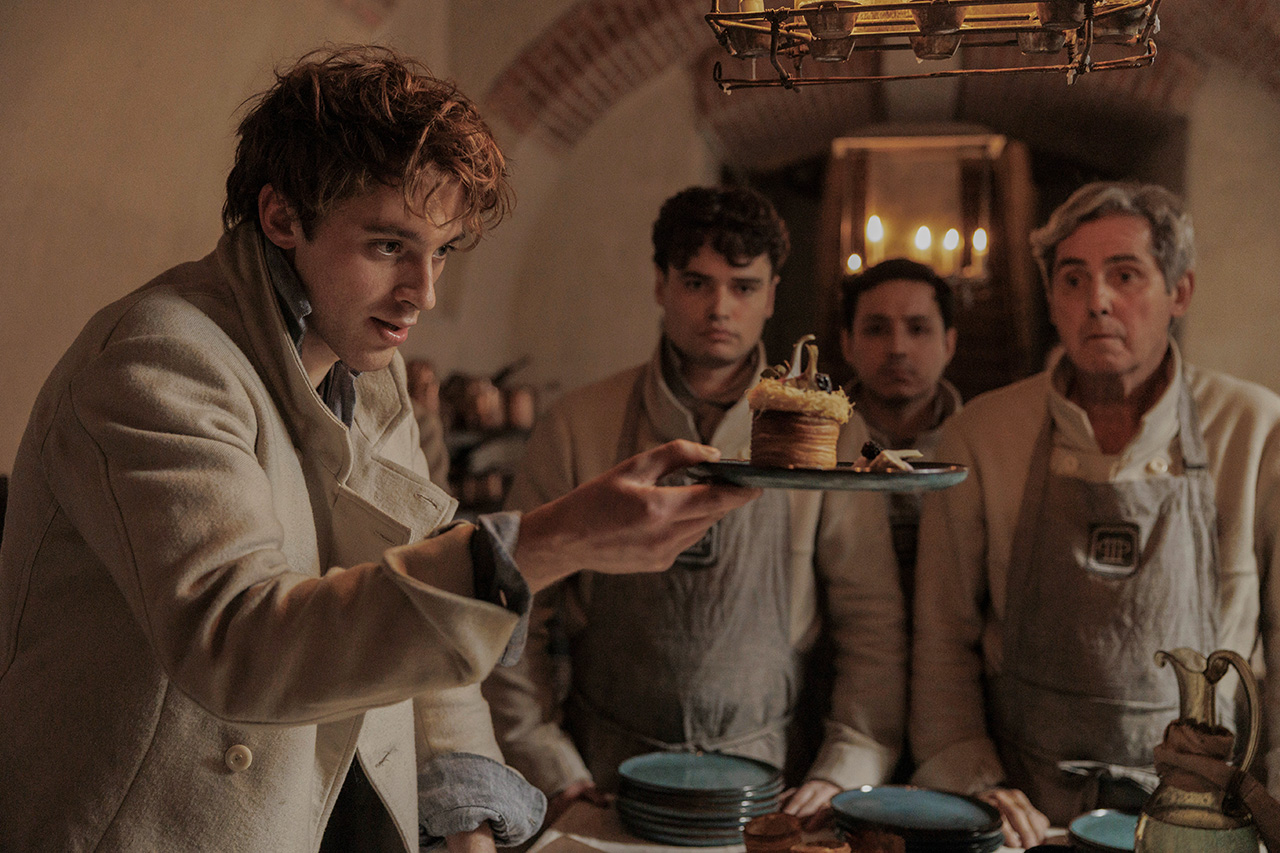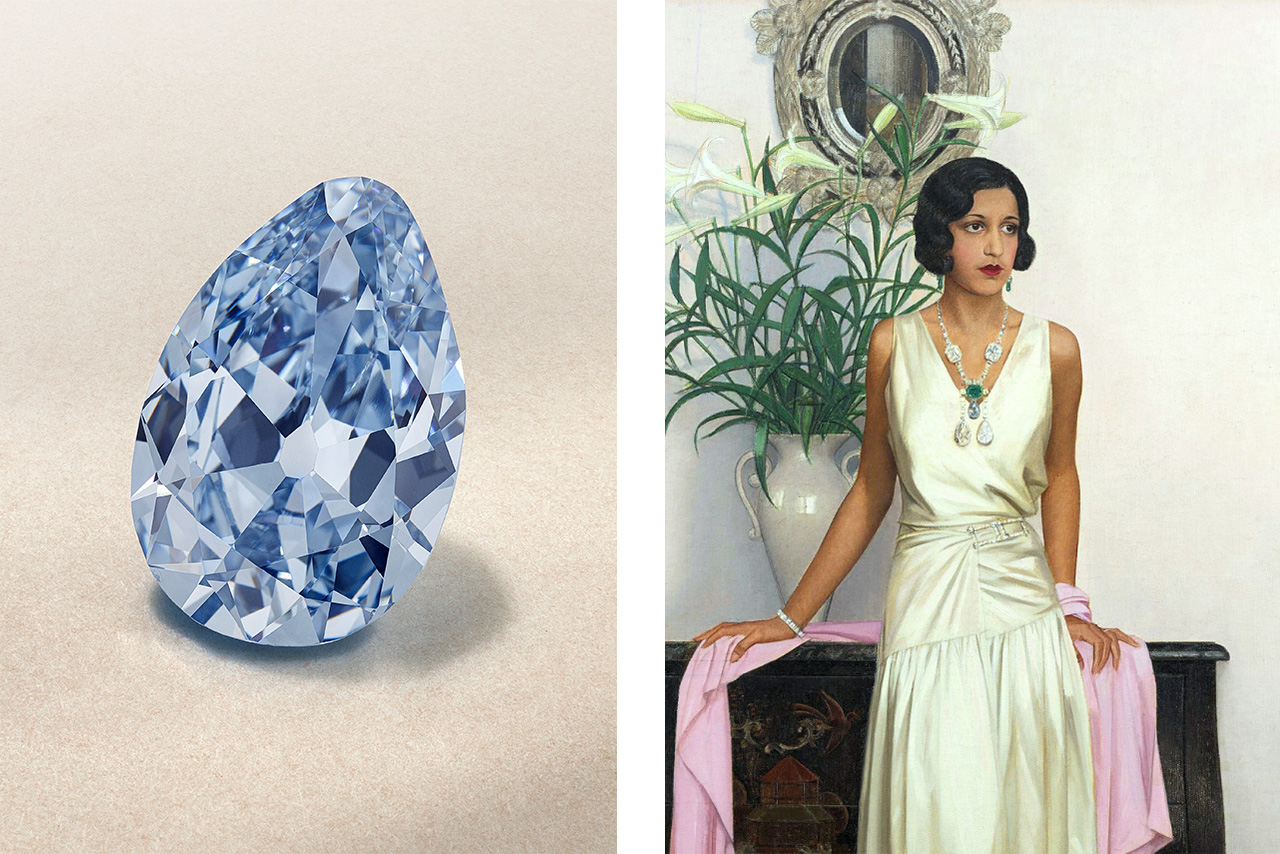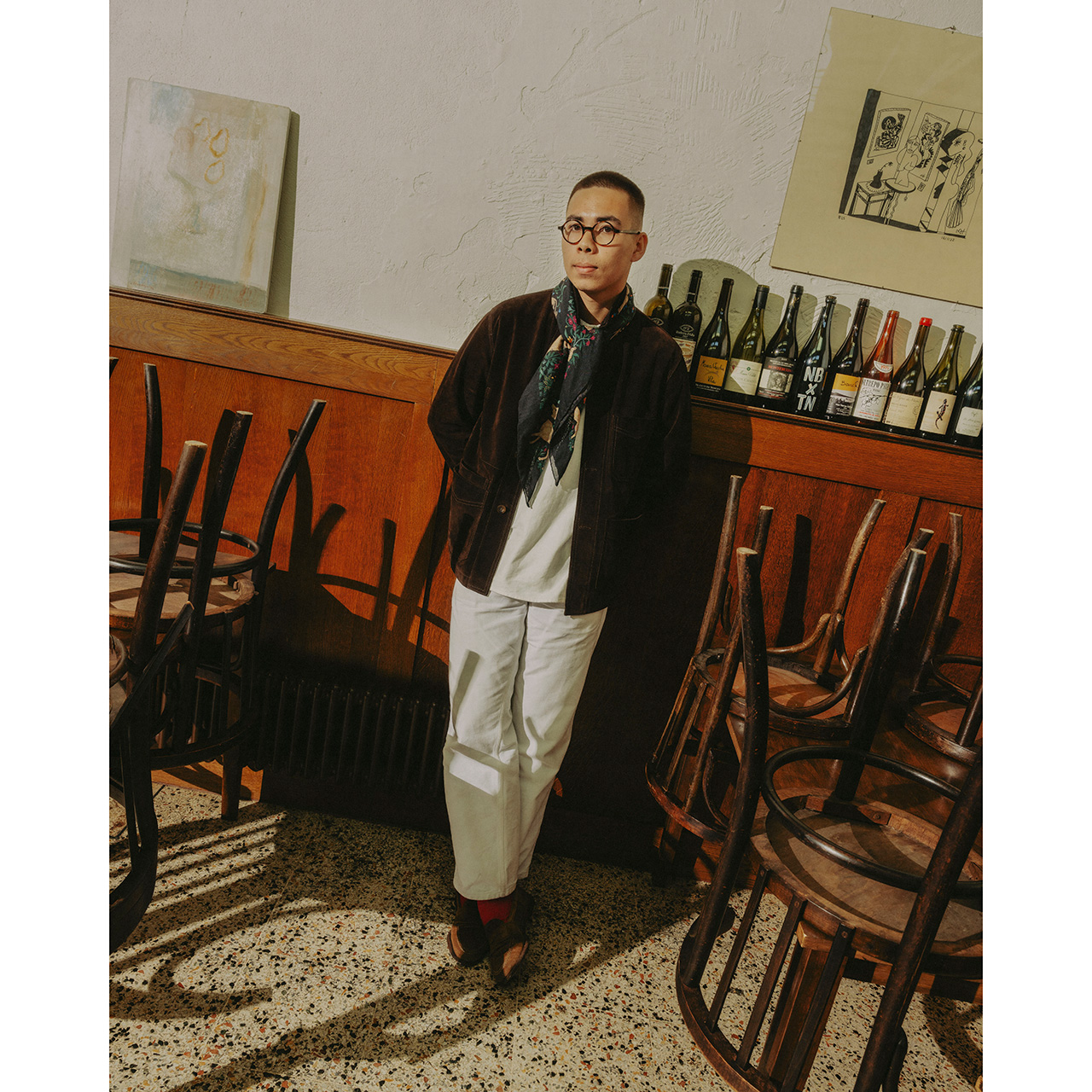A fresh take on culture, fashion, cities and the way we live – from the desks of Monocle’s editors and bureaux chiefs.
|
Saturday 26/4/25
|

|
|
London
Paris
Zürich
Milan
Bangkok
Tokyo
Toronto
|
|
|
|

HIDDEN GEMS
In this week’s dispatch, we receive some tips on timeless dressing from Junyin Gibson, the brand and creative manager of UK outfitters Drake’s, before following the threads to New York, where Indian fashion label Kartik has opened its first US shop. Then we zoom in on some of this month’s top cultural highlights, learn city secrets from the doormen of Cairo and reflect on the history of the world’s largest blue diamond, which will soon go under the hammer in Geneva. But first, Andrew Tuck pops his Jakarta cherry.
|
|
Our first Chiefs conference in Jakarta went off with a bang. Here’s why you should visit too
By Andrew Tuck
|

|
I lost my virginity this week. Boy, was it fun – especially as I was surrounded by so many Monocle supporters, colleagues and incredibly talented business leaders. I’m not sure why it took me so many years to get to this point but, dear reader, I am no longer a Jakarta virgin.
The Chiefs is Monocle’s conference series that focuses on leadership by interviewing people who run successful enterprises and have had to navigate life’s hurdles, and whose stories have the potential to inspire. After editions in St Moritz, Dallas and Hong Kong, this week we headed to the Indonesian capital, where I had never stepped foot in before.
I was not alone. When we do a conference in, say, Paris or Berlin, the people in attendance have usually visited the city many times before – but that was not the case in Jakarta. Some guests had been to Bali but even those living in the region (in Saigon or Manila, for example) had often never put this place on their travel itineraries.
Why? For years Jakarta has been regarded as a place that you might visit for business but never for fun. The only thing that it has an international reputation for is traffic-snarled streets. So how about I tell you 10 things that might tempt you to lose your Jakarta virginity (unless I am too late on that front) and, just as importantly, entice you to attend our next big gathering in September: The Monocle Quality of Life Conference in Barcelona.

1
The traffic is frustrating but if you follow the example of the locals and sign up for an app such as Gojek, you will be nipping around town on the back of a Honda motor scooter in seconds.
2
The coffee scene is impeccable. Local and international players go big on retail design, service and space. Kurasu Kissaten is here from Japan and so are % Arabica and Oslo’s Fuglen. I was grateful as I needed all of that caffeine to carpet-bomb my jet lag into oblivion.
3
And the bars. We had cocktails at Modernhaus, where the mid-century furniture, great lighting and cool crowd were as seductive as the drinks.
4
There are also lots of talented people shaking up the world of retail here. One of our speakers was Cynthia Wijono, co-founder of Brightspot Market, a pop-up event that runs over two weekends in summer. Hundreds of brands compete for pitches. And you can see why: more than 100,000 people now turn up. This is a huge, young market.
5
It’s a service culture writ large. Cable ties were added to my laptop and phone-charger leads when the hotel staff cleaned my room. I asked one of the young bellboys for directions and, as it was nearby, he walked me there.
6
Monocle readers are great. Really. People flew in from around the world to attend and they were all engaged and fun – especially the crew who ended up dancing until 03.00.
7
The speakers weren’t bad either. Creative director Mark Landini, for example, delivered a masterclass on branding that was comic genius. He and Nic Monisse, our also amusing design editor, seemed close to forming a double act after their session onstage.
8
The new 25hours Hotel The Oddbird was the key conference venue. It’s good. So too is The Langham.
9
We’re lucky to have people from across the globe working at Monocle. Jess, our senior designer, is from Bali. Having her in Jakarta was helpful on the language front but on the final day her mum also took us out for lunch and had us eating delicious food in no time… though I was happy to pass on the cow cartilage.
10
I’ll be back. Well, once you’ve finally done it, you want to go again.
|
|
Culture Cuts: Watch, listen, read
The best of this month’s cultural releases

Watch: ‘Carême’, Apple TV+
Marie-Antoine Carême was history’s first celebrity chef. He baked Napoleon’s wedding cake and orchestrated feasts for the Russian tsar and the British prince regent in Brighton. This luscious series directed by Martin Bourboulon explores the life of this impoverished-orphan-turned-culinary genius and unexpected imperial spy.
Released on 30 April. For our interview with director Martin Bourboulon, pick up a copy of the latest issue of Monocle.
Listen: ‘Journey Through Life’ by Femi Kuti
Femi Kuti continues to release the kind of kinetic and jubilant protest music with which his father, Nigerian legend Fela, made his name. But on his latest album, Kuti is looking inward. During this up-tempo escapade through his 62 years of innocence and experience, the veteran saxophonist deals out life lessons amid his trademark Afrobeat.
‘Journey Through Life’ was released yesterday
Read: ‘Small Boat’ by Vincent Delecroix, translated by Helen Stevenson
Small Boat examines the real-life sinking of a dinghy carrying migrants across the English Channel in 2021, which led to the loss of 27 lives. The book imagines the subsequent questioning of a radio operator who fielded calls from the vessel at the Cap Gris-Nez marine rescue centre and ultimately decided not to send help. It is a work of striking empathy.
‘Small Boat’ is out now
|
|
TRUNK CLOTHIERS  MONOCLE MONOCLE
|
|
WHAT AM I BID? The Golconda Blue
Christie’s prepares to auction the world’s largest-ever blue diamond
Many of the world’s most famous diamonds come from one region of India (writes Andrew Mueller). The mines of Golconda in Andhra Pradesh have coughed up treasures such as the Koh-i-Noor, the Hope Diamond, the Dresden Green and the Regent Diamond. On 14 May at the Four Seasons Hotel des Bergues Geneva, Christie’s will auction the biggest Golconda diamond ever put on the block: the 23.24-carat Golconda Blue.

When you buy a jewel of this rarefied stature, you are also buying its story. The Golconda Blue once belonged to Yashwant Rao Holkar II, who lived it up exuberantly as the maharaja of Indore from 1926 until Indian independence in 1948, when he and others of his self-indulgent ilk had their wings clipped. It later came into the possession of US jeweller Harry Winston, who once owned the Hope Diamond, before disappearing from view for decades. Christie’s expects the gemstone to fetch as much as $50m (€44m), though prospective buyers should also consider the cost of security arrangements more solid than their sock drawer.
|
|
How we live: Cairo’s ‘bawabs’
Cairo is changing but the city’s know-it-all doormen remain firmly entrenched
The Arabic word bawab can be translated as “doorman” but a more accurate way of describing one would be “gatekeeper” (writes Mary Fitzgerald). In Cairo, you’ll find him (they’re typically older men) sitting in front of a residential building, performing his role as part security guard, part porter and all-round fixer. But he’s also often a little feared in his capacity as a self-appointed moral guardian who monitors the comings and goings of residents in this city of more than 20 million inhabitants.

When I lived in the leafy Zamalek neighbourhood of Cairo, my gatekeeper was an elderly man from Upper Egypt, always dressed in a pristine flowing gallabiya, who neglected to cling to the conservative mores of his rural background. But I heard countless stories of snooping doormen who openly disapproved of how residents led their lives – divulging secrets of steamy affairs, marital arguments or both to their favoured residents (they’re a ripe source of some great stories). In some cases, interfering bawabs can be persuaded to tell all with a quiet word – or, worse, a wad of cash – so many people live in fear of their nosey ways. Unsurprisingly, the figure is a quintessential comedy character in Egyptian novels and films. Posts and clips skewering the bawab as a busybody appear regularly on the country’s social media.
On a recent trip to Cairo, I was struck by the ways in which this sprawling metropolis is changing. Many who lived in these central, communal neighbourhoods, such as Zamalek, have moved to newly built villas on the city’s outskirts. But the locals I spoke to say that the bawabs are going nowhere. New, gated developments need bawabs too and this time my guard, porter and fixer was in his early thirties – far younger than usual. Perhaps this generation will prove more accepting and less gossipy. Or is he just talking about me online instead?
|
|
|
Sponsored by Trunk Clothiers
|
|
Words with… Junyin Gibson
The importance of timeless styles with Drake’s brand and creative manager
Junyin Gibson is the brand and creative manager of UK outfitters Drake’s (writes Jack Simpson). Gibson moved to the country from Hong Kong when he was 17 and his style is inflected with British and Asian influences: think waxed coats over pankou buttoned shirts. We met him at Leo’s in London to learn about his silver-screen sartorial heroes, styling on the move and the benefits of adopting a consistent mode of dress.

Who influences what you wear?
Michael Hill, the creative director of Drake’s. The consistency of his styling is what inspired me to adopt more of a uniform and focus on timeless styles rather than reacting to what others wear. When we travel together, he makes sure that we put time aside for exploring. Some of my best finds have come from scouring Koenji’s vintage markets in Tokyo. Elsewhere, films such as In the Mood for Love and actors, including Tony Leung and Toshiro Mifune, have all had an effect on my style.

You’re always on the move. How do you dress while travelling?
You have to be logical and prioritise utility. That’s what some of the best designs do. In that regard, a utility vest is perfect for the airport: it’s light, everything you need is on hand and you can layer it over anything. Crucially, you must make space in your suitcase for new pieces, whether vintage staples or basics. I always pick up Lee Kung Man’s Henley T-shirts when I’m in Hong Kong. Bruce Lee made them famous and you can find them in school uniform shops there.
Should we all adopt a uniform of sorts?
It makes mornings easier. The majority of my wardrobe works together because I collect timeless styles and complementary silhouettes. When you have a good base of neutrals, you can throw in pops of colour and pattern. I tend to opt for a bright jumper wrapped around my neck.
To read the full interview with Gibson, pick up a copy of Monocle’s May issue, which is on newsstands now.
|
|
| | |